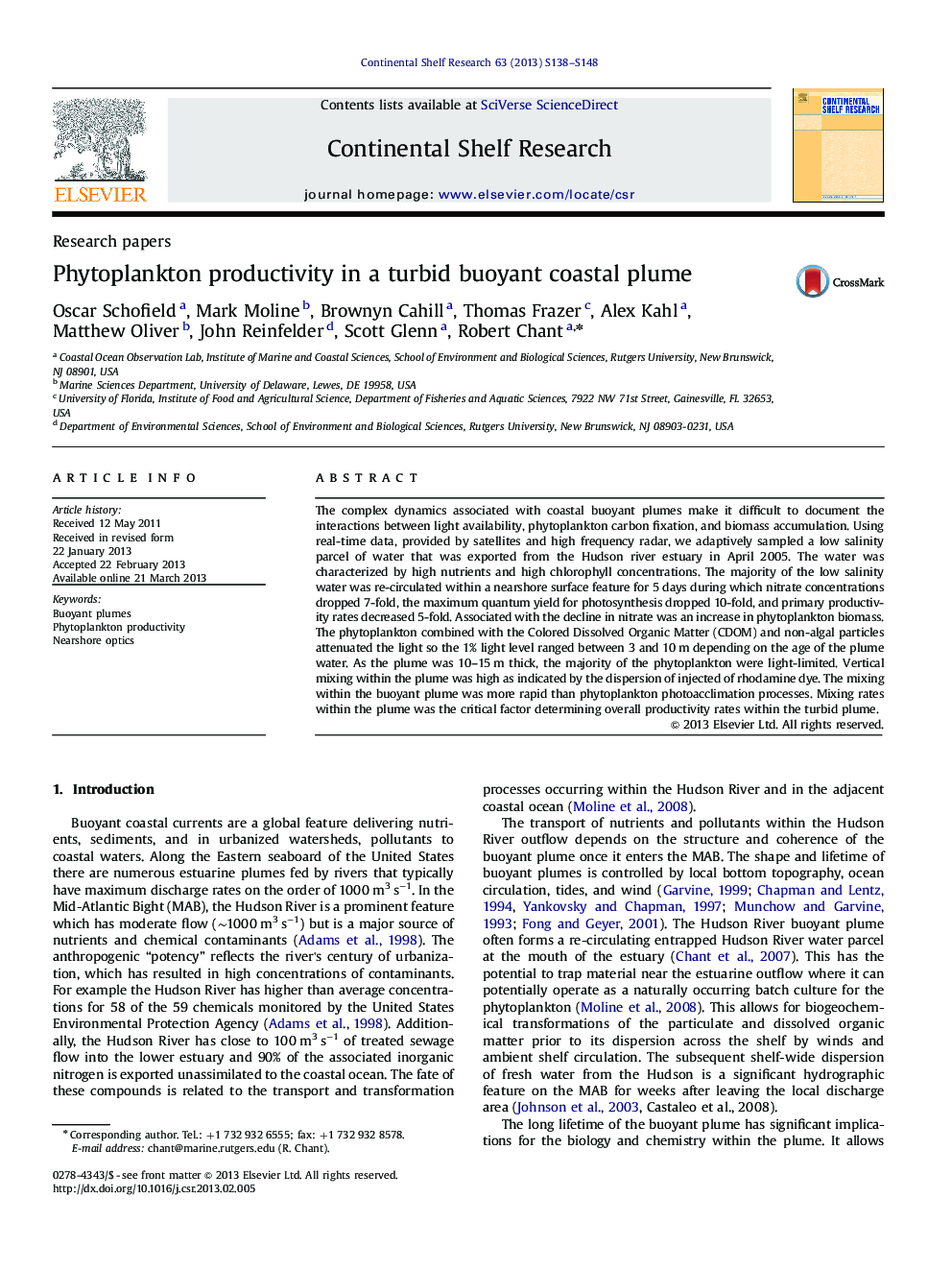| Article ID | Journal | Published Year | Pages | File Type |
|---|---|---|---|---|
| 4532087 | Continental Shelf Research | 2013 | 11 Pages |
•Complex dynamics in coastal buoyant plumes make biophysical interactions to document.•Hudson river water, recirculated nearshore, was characterized by high nutrients and chlorophyll.•Mixing in a turbid river plume was the critical to determining phytoplankton productivity rates.
The complex dynamics associated with coastal buoyant plumes make it difficult to document the interactions between light availability, phytoplankton carbon fixation, and biomass accumulation. Using real-time data, provided by satellites and high frequency radar, we adaptively sampled a low salinity parcel of water that was exported from the Hudson river estuary in April 2005. The water was characterized by high nutrients and high chlorophyll concentrations. The majority of the low salinity water was re-circulated within a nearshore surface feature for 5 days during which nitrate concentrations dropped 7-fold, the maximum quantum yield for photosynthesis dropped 10-fold, and primary productivity rates decreased 5-fold. Associated with the decline in nitrate was an increase in phytoplankton biomass. The phytoplankton combined with the Colored Dissolved Organic Matter (CDOM) and non-algal particles attenuated the light so the 1% light level ranged between 3 and 10 m depending on the age of the plume water. As the plume was 10–15 m thick, the majority of the phytoplankton were light-limited. Vertical mixing within the plume was high as indicated by the dispersion of injected of rhodamine dye. The mixing within the buoyant plume was more rapid than phytoplankton photoacclimation processes. Mixing rates within the plume was the critical factor determining overall productivity rates within the turbid plume.
